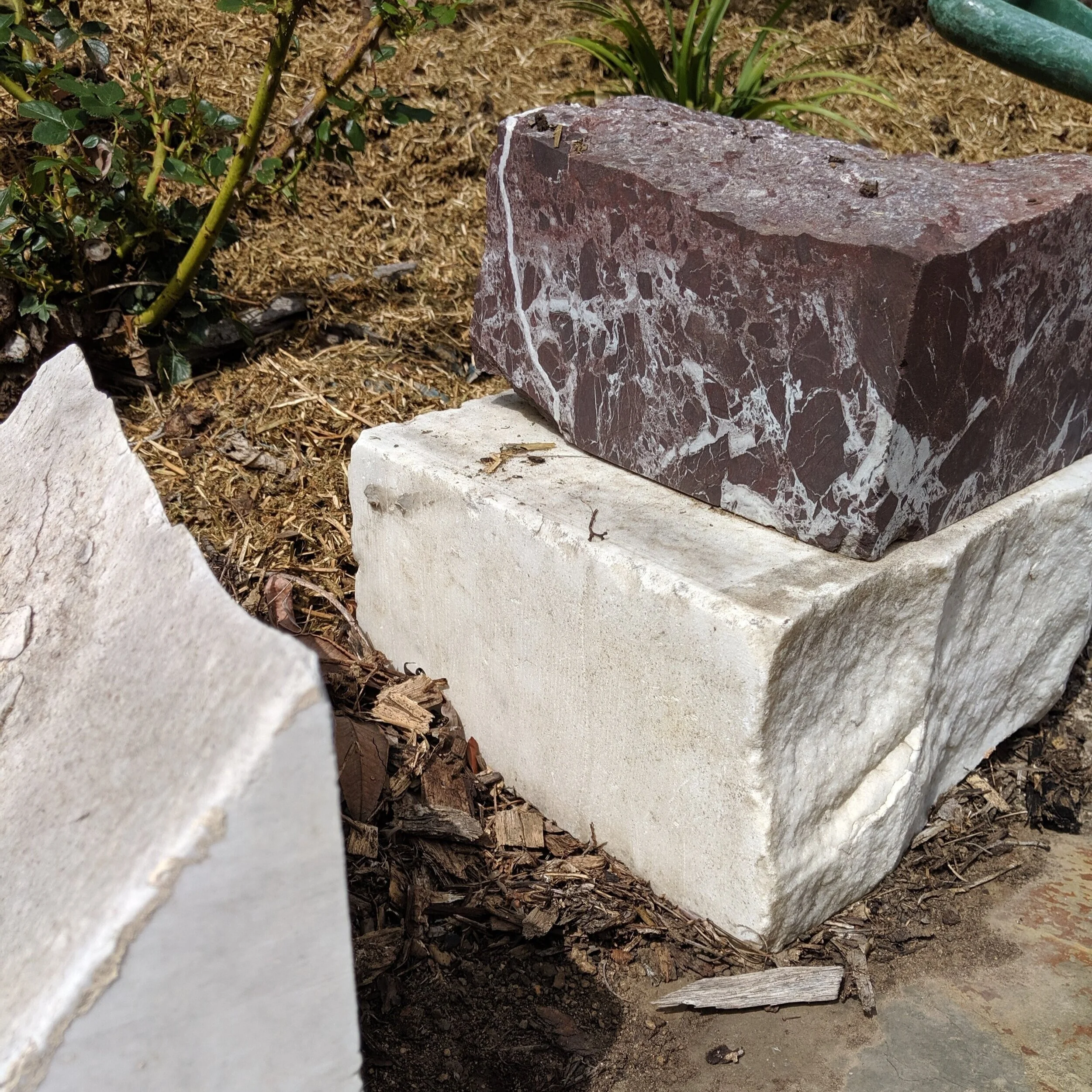The Spirit & Energy of Stone in the Garden
I have always been an admirer of stone used in the garden. While in fact I am enamoured of all-natural elements stone in its mystery and solidness has always cast a spell on me. For the longest time I could not quite put my finger on why this very tactile and often very permanent material had such a power and enigma to me. While I knew that the Chinese and Japanese gardeners from Daoist and Buddhist traditions used stone and gravel with deep thought and reverence, never had the energy or the spirit of stone captured me the way it has until I first started gardening for a sculptor.
I have always used stones to some capacity beginning with amateurish sunken stone edges and randomly lain bush rocks for decoration. While the uses of stone in the garden are many and varied it was practicality rather than thought that pervaded in these instances. Most of us will recognise the practical use of stone and rock in the garden whether as steppers, retainers or drystone wall, pillars, plinths, paths and even hollowed as pools, pots and watercourses. The dry stream bed has become a popular garden feature over the years and is practicality incarnate. These uses provide soak aways, raised beds, surety of footing, water sources and cool root runs. A substitute for areas of lawn, plant or animal habitat and security.
It is however the sense of place that stone brings to the garden. A surety and solidness much like great old trees that we have always known to be there and may likely still be there well after we are gone. A stone will persist through drought and provide natural beauty when perhaps other parts of the garden are fading. There is less and less assurance in this age that a garden may last even beyond a single generation… but stone, stone feels like it could be forever. The Chinese and Japanese gardeners from the 17th century and onwards revered nature and would select stone for many philosophical reasons. It could have been selected to emulate mountains or islands in the kingdom with moss or gravel often representing the ocean. Certain stones were selected for the impressionistic forms of animals. Others still were selected to form a spiritual narrative or form a part of a proverb or story that could be meditated upon. These gardeners knew the sense of place, spirit and energy that stones contained and certainly handled them with an appropriate amount of respect.
Recently I have taken on a project that has completely cemented my view of stone in the garden. Through a friend I have begun work restoring and maintaining an artists garden. This particular artist had at one stage been a prolific sculptor and many of her very elegant works have become natural and graceful features in the garden. It is however the unworked stone that continues to capture my imagination. As inspired by the beautiful forms of sculpted waves, horses, dancers and busts as I am, it is the formless stones that hold the energy and potential. The garden is scattered with chunks of unworked alabaster and red stone, bush rocks, volcanic stone and geological wonders that escape my level of knowledge. It is these that I stare at throughout different times of the day observing their shine, shadows and dreaming of what perhaps they could have become. Their artless form is the art of nature and by the window of intention set by the artist at some stage they have taken on a life of their own.

